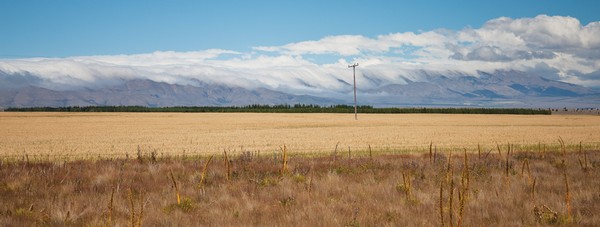Flexible decision making tactics for climate change
Preparing New Zealand’s primary industries for climate change is an enormous challenge. Uncertainty around the wide range of possible climate change impacts could lead to over-investment in some areas and under-investment in others. To ensure that we can protect our primary industries efficiently, Scion is investigating an analytical tool that gives decision makers the flexibility to plan for a range of climate change scenarios as they unfold.
How to build climate change into infrastructure decision making
Scion is introducing Real Options Analysis (ROA) to New Zealand’s climate change armoury. ROA is an analysis tool that has primarily been used in finance, but is increasingly used internationally in climate change adaption, particularly for infrastructure planning.
ROA presents investments such as new infrastructure projects as a journey. Along the journey, there are a defined number of decision-making points that are presented as the branches of a tree. Climate change modelling data is used to create the possible scenarios/branches that follow through to a measured response. On a 100-year investment, there would be several different decision-making points along the way that allow the investment to be customised to the situation. This is opposed to a one-off irreversible decision that risks costly over-expenditure or under-expenditure if the project needs to be expanded or re-scoped.
A New Zealand based case study
Scion will be investigating water storage options for a catchment in Canterbury, whose primary industries are heavily reliant on a secure water supply. Our team will be using ROA to set decision makers on a path to making more efficient water storage infrastructure investments.
Research programme leader Dr Anita Wreford says that ROA can be used for a wide variety of projects, from roading to flood management. “For example, we know that over time the climate will change, but there is significant uncertainty around how and when. An increase in droughts and variable rainfall may lead to a need for more water storage so that it’s available when needed but the amount we’ll need to put aside is unknown.
“ROA allows the design to be adjusted or extended through a series of options over time, when the direction and magnitude of climate change has become more apparent. By making careful decisions that allow for a changing climate, this response can help to reduce the pressure on our rivers and aquifers.”
Climate change adaptation one step at a time
Using ROA in climate change adaptation has clear advantages. Anita says, “This approach allows us to take climate change one step at a time. People have the opportunity to understand and plan for the most likely effects of climate change as they affect them.
“ROA can reduce some risks when making decisions in uncertain circumstances and that’s an empowering management concept.”
The conventional process for analysing a big infrastructure project is cost benefit analysis (CBA). ROA has advantages over CBA in the context of climate change, by considering uncertainty and explicitly placing a value on flexibility.
The benefits and challenges of ROA
It is not just policy makers that benefit from the flexibility of ROA, Anita says. “People naturally use a simplified version of ROA in day to day decisions. Using it on a big scale will ensure that everyone in New Zealand benefits from safeguarding our industries.
“There are a number of challenges to using it here. ROA is extremely data intensive – and the probability analysis hasn’t been carried out in this context here before.”
This lack of existing data analysis will be a hurdle for Anita’s team, but will ultimately benefit New Zealand by finding a way to use the data available.
The project will be run over the next two years, with funding from The Deep South National Science Challenge. Scion will be working with experts from NIWA, Lincoln University and the University of Portland to undertake the study.

